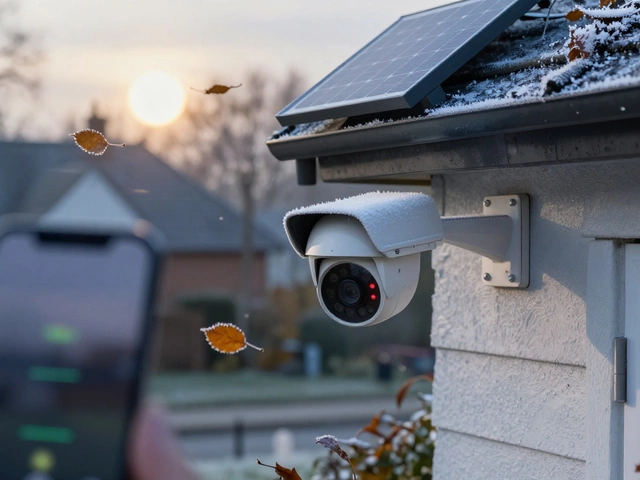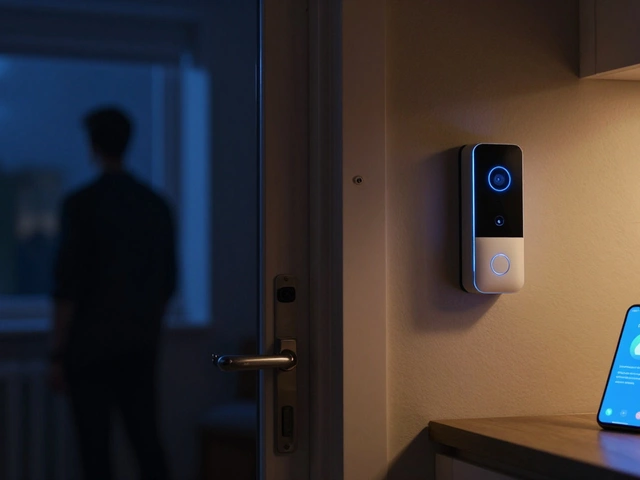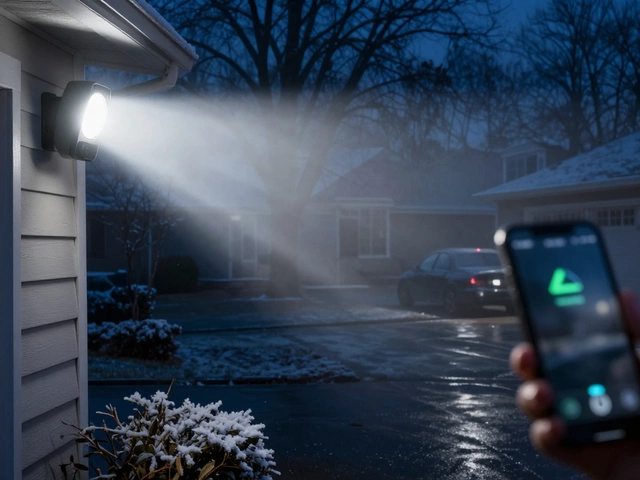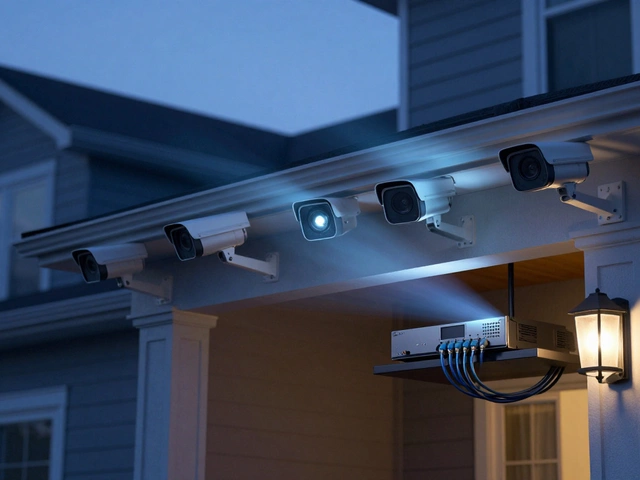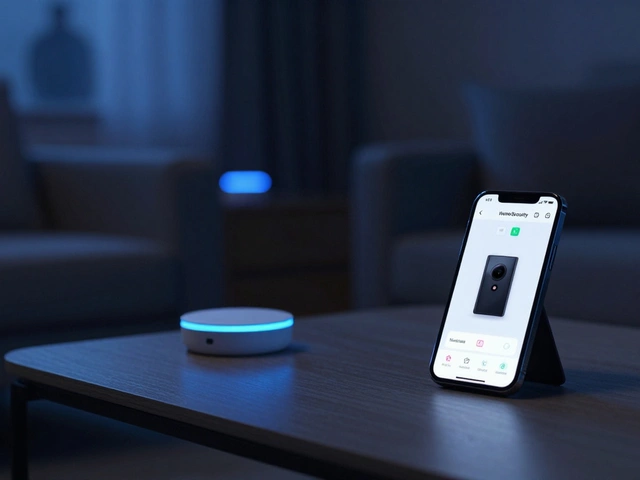Picture this: you’re about to leave your house and you suddenly wonder if you left the lights on. With a smart home, you just whip out your phone, check an app, and instantly know the answer. The idea sounds futuristic, and honestly, it kind of is. But we’re not in a sci-fi movie; people all over the world control their heating, lighting, and even their coffee makers from the palm of their hand. But the burning question remains: does building a smart home make life genuinely better—or are we just signing up for expensive gadgets we’ll barely use?
The Real Upsides of Living with Smart Tech
The strongest pitch for a smart home usually comes down to convenience. Small things add up; whether it’s asking Alexa to play music, having your lights dim automatically at bedtime, or coming home to a house that’s already the perfect temperature. The sense of control you get from a centralized hub—where you tweak settings, turn things on or off, and even monitor energy use—is flat-out satisfying. Studies from Statista in 2024 suggested that roughly 63% of US households use at least one smart device. So, what are folks really using them for?
- Smart lighting: Automating lights saves time and can cut electricity bills by up to 30% if you set routines and combine them with motion sensors.
- Thermostats: The EPA estimates that smart thermostats save homeowners up to $180 a year, mostly because they adapt to your habits and only heat or cool when necessary.
- Voice control: For families with kids or elderly relatives, having hands-free control means less fumbling and more independence. “Being able to control your home using just your voice isn’t just about comfort—it’s about accessibility,” according to home tech reviewer Julie Jacobson.
Beyond saving a few minutes here and there, safety is getting better. Smart smoke detectors, carbon monoxide alarms, and security cameras let you know immediately if something’s up—even when you’re far from home. Some folks, especially dog- and cat-owners, use smart cameras to chat with their pets or make sure they aren’t upending the couch cushions.
But here’s something not everyone mentions: integration. Modern smart homes aren’t just glorified remote controls. When your devices work together, the magic happens. Set a scene labeled “Good Night” and watch as locks bolt, lights dim, thermostats adjust, and the coffee pot preps itself for the morning. The smart home dream is about chaining ordinary actions together—all without rolling out of bed.
Privacy and security creep into every smart home discussion. While devices collect data to fine-tune your experience, the companies behind them store personal info. Most well-known brands—like Google’s Nest and Amazon’s Echo—encrypt your data, but leaks are possible. Experts suggest setting up two-factor authentication and changing default passwords as soon as you unbox. As Forbes tech contributor, Thomas Brewster, warned in 2023:
“Convenience shouldn’t mean you forget about security—your door lock shouldn’t be the weakest link in your home.”
Counting the Costs (And What’s Actually Worth Buying)
Five years ago, you’d need deep pockets to get all the latest smart gadgets. These days, it’s a lot more affordable to build a basic setup. You can grab a good Wi-Fi enabled smart plug for less than $20. For less than $100, you can add a smart speaker like Amazon Echo or Google Nest, and now almost every new TV features smart controls out of the box.
That said, not every purchase is a home run. Robot vacuums are a revelation or a regret, depending on your floor plan and expectations. Fancy smart fridges, if you can even justify their price tag, have screens you might end up ignoring. So where does your money actually go the farthest?
- Simple smart plugs turn non-smart lamps and appliances into automated wonders. Great bang for your buck.
- Smart bulbs can be scheduled, dimmed, or color-shifted from your phone to set just the right mood. No rewiring required.
- Video doorbells give peace of mind and act as a deterrent for package thieves. In an experiment by Princeton (2023), package theft dropped 23% in homes that installed video doorbells.
- Thermostats pay for themselves after a year or two if you set them smarter than you might manually.
What about the hidden costs? You’ll want a beefy, reliable Wi-Fi network. Many older routers can’t handle more than a handful of devices streaming, updating, and talking at once. If you’re serious, look into mesh Wi-Fi systems that spread a strong signal through every corner of the house.
Subscription creep is real. Many smart cameras, alarm systems, and even some lighting apps ask for a monthly fee for cloud storage, extra features, or advanced routines. Be picky with subscriptions—ask yourself if that extra tenner a month actually makes your home feel better or just adds another drain on your bank account.
Upgrades and compatibility can bite as well. Brands sometimes change protocols, meaning gear you buy today could be obsolete in a few years. Stick to major brands with a good reputation for updates, and double-check if devices you want work with your chosen voice assistant or hub.

When Smart Homes Make Sense (And When to Skip)
Not every house—or family—gets the same benefits from smart tech. If you work from home, scheduling the thermostat and lighting based on activity can save real money over time, plus boost comfort during long Zoom meetings. Parents with small kids love using intercom or camera features, while late-night snackers appreciate hallway lights that pop on gently at midnight.
But say you love fiddling with actual switches and dials, or you’re not all that fussed about routines—maybe you won’t get much value out of stacking more tech. Folks who travel loads or leave the house at unpredictable times get the biggest boost—being able to spot a water leak, a left open window, or a forgotten iron from afar is nothing to sneeze at.
Accessibility is another huge reason people buy in. For those with mobility challenges or the elderly, voice controls for lights, doors, and alarms are downright liberating. Even for those without any issues now, future-proofing by wiring in a few smart switches isn’t a bad plan.
Don’t forget smart security. Loads of burglaries happen during the day while people work. According to the FBI’s Uniform Crime Reporting Program, homes with visible smart cameras are 55% less likely to be targeted by burglars. Plus, being able to check footage while you’re miles away is a powerful thing for peace of mind.
But it’s not all roses. Tech goes wrong sometimes: lights refuse to respond, assistants mishear commands, and app updates move buttons around. You’ll need to sharpen your troubleshooting skills—or risk hurling your phone across the room in frustration. Wi-Fi drops can knock your smart home offline, which is why some experts advise running critical devices (like locks and alarms) with a backup system or local controls.
If privacy’s your top concern, there’s no sugarcoating: smart devices do collect and transmit data. You can limit this with careful setup, strong passwords, and using brands with good reputations for privacy, but total privacy is hard to guarantee in a networked home.
Getting Started: Practical Tips for a Smarter Home
If you’re thinking about dipping your toes in, don’t blow your budget on a dozen gadgets at once. Start with one device that solves a real everyday hassle. Maybe it’s a smart home speaker for voice control, or a handful of smart plugs to tame tangled cords behind the TV.
Here’s a step-by-step playbook for folks just starting out:
- Pick Your Platform: Choose between Alexa, Google Assistant, Apple HomeKit, or another hub you actually like using. Sticking to one keeps things less confusing down the road.
- Prioritize Needs: Start by automating the most annoying or repetitive tasks: maybe turning lights on at dusk or scheduling morning routines.
- Wi-Fi Comes First: Before adding more gadgets, beef up your Wi-Fi. Mesh routers almost always beat old-school standalones in modern homes.
- Add in Layers: Once you’re comfortable, add a smart thermostat, security cameras, or connected sensors for windows or doors.
- Secure Your Devices: Change those default passwords, use two-factor authentication, and update firmware whenever prompted.
- Test and Tinker: Link devices into routines. Set up geofencing so your house knows when you arrive or leave. Learn what works—and set aside or sell what doesn’t.
Who knows, you could end up loving the flexibility that comes with home automation. Or maybe you’ll just use a smart plug and leave it at that, happy you never have to crawl behind the Christmas tree again. Either way, smart home tech isn’t hype anymore. It’s about real-life solutions—if you pick your gear wisely, you’ll probably wonder how you ever lived without it.


